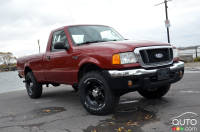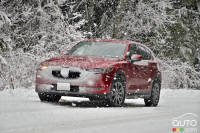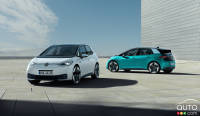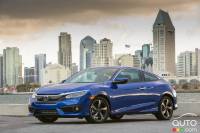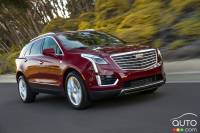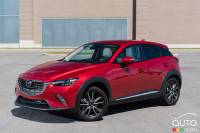West Point, Georgia — Well here we are in America’s deep south, ready to sample some local fare.
It’s not fried chicken. It’s not pecan pie. It’s not sweet tea.
It’s the all-new 2011 Kia Sorento.
This new Sorento is the first vehicle to be produced at Kia Motors Manufacturing Georgia (KMMG), a new $1 billion facility, which has the capacity to build 300,000 vehicles a year.
New crossover platform
The previous-generation Sorento is an old-school SUV. Body-on-frame construction. Truck-type part-time 4WD. Rugged yes. But heavy and not so fuel-efficient.
Now that Kia is owned by Hyundai, and now that old-school SUVs are, well, old school, the Sorento has migrated over to the crossover platform that also underpins Hyundai Sante Fe.
So if you’re familiar with the 2010 Sante Fe, then you’ll be relatively up to speed on the 2011 Sorrento.
As does Sante Fe, the Kia Sorento straddles the line between a compact and a midsize crossover utility vehicle (CUV). It’s longer and more voluminous than most compact CUVS, and offers three-rows of seating and optional V6 power, which makes it seem “midsize-like.”
But it will be priced closer to compact competitors, and like those vehicles, its standard engine is a four-banger (in Sorento's case, a 175-hp 2.4 litre I4).
Kia Canada says Sorento’s primary competitors are Ford Escape, Honda CR-V, Toyota Rav4, and Chevrolet Equinox.
Georgia (backgrounds) on my mind
Our mount for our romp through the Georgia countryside was an EX AWD V6.
The 3.5-litre V6 pumps out 276 hp and 248 lb-ft of torque, and is mated to a new 6-speed automatic. The powertrain is extremely well suited to Sorento. Torque flows at low revs, and shifts are silky smooth. If you are stuck in traffic, the transmission will save fuel by automatically shifting to neutral. It also features “EcoMinder” — a light on the dash congratulates you whenever you drive in a fuel-saving manner.
When traction is not an issue, the AWD system distributes 5 percent of the torque to the rear wheels. When front traction is an issue, it can send up to 50 percent of torque to the rear wheels. If you get stuck, you can push a switch that will lock the torque at a 50/50 split. It will automatically “unlock” as soon as you hit 30 km/h.
It’s not fried chicken. It’s not pecan pie. It’s not sweet tea.
It’s the all-new 2011 Kia Sorento.
This new Sorento is the first vehicle to be produced at Kia Motors Manufacturing Georgia (KMMG), a new $1 billion facility, which has the capacity to build 300,000 vehicles a year.
 |
| The Sorento has migrated over to the crossover platform that also underpins Hyundai Sante Fe. |
New crossover platform
The previous-generation Sorento is an old-school SUV. Body-on-frame construction. Truck-type part-time 4WD. Rugged yes. But heavy and not so fuel-efficient.
Now that Kia is owned by Hyundai, and now that old-school SUVs are, well, old school, the Sorento has migrated over to the crossover platform that also underpins Hyundai Sante Fe.
So if you’re familiar with the 2010 Sante Fe, then you’ll be relatively up to speed on the 2011 Sorrento.
As does Sante Fe, the Kia Sorento straddles the line between a compact and a midsize crossover utility vehicle (CUV). It’s longer and more voluminous than most compact CUVS, and offers three-rows of seating and optional V6 power, which makes it seem “midsize-like.”
But it will be priced closer to compact competitors, and like those vehicles, its standard engine is a four-banger (in Sorento's case, a 175-hp 2.4 litre I4).
Kia Canada says Sorento’s primary competitors are Ford Escape, Honda CR-V, Toyota Rav4, and Chevrolet Equinox.
Georgia (backgrounds) on my mind
Our mount for our romp through the Georgia countryside was an EX AWD V6.
The 3.5-litre V6 pumps out 276 hp and 248 lb-ft of torque, and is mated to a new 6-speed automatic. The powertrain is extremely well suited to Sorento. Torque flows at low revs, and shifts are silky smooth. If you are stuck in traffic, the transmission will save fuel by automatically shifting to neutral. It also features “EcoMinder” — a light on the dash congratulates you whenever you drive in a fuel-saving manner.
When traction is not an issue, the AWD system distributes 5 percent of the torque to the rear wheels. When front traction is an issue, it can send up to 50 percent of torque to the rear wheels. If you get stuck, you can push a switch that will lock the torque at a 50/50 split. It will automatically “unlock” as soon as you hit 30 km/h.
 |
| The 3.5-litre V6 pumps out 276 hp and 248 lb-ft of torque, and is mated to a new 6-speed automatic. |





